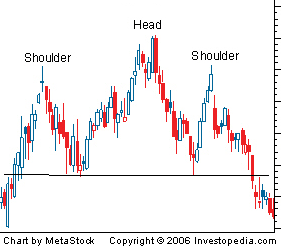
The head and shoulders pattern forms when a stock’s price rises to a peak and subsequently declines back to the base of the prior up-move. Then, the price rises above the former peak to form the “nose” and then again declines back to the original base. Then, finally, the stock price rises again, but to the level of the first, initial peak of the formation before declining back down to the base or neckline of chart patterns one more time.

- After long bullish trends, the price rises to a peak and subsequently declines to form a trough.
- The price rises again to form a second high substantially above the initial peak and declines again.
- The price rises a third time, but only to the level of the first peak, before declining once more.



